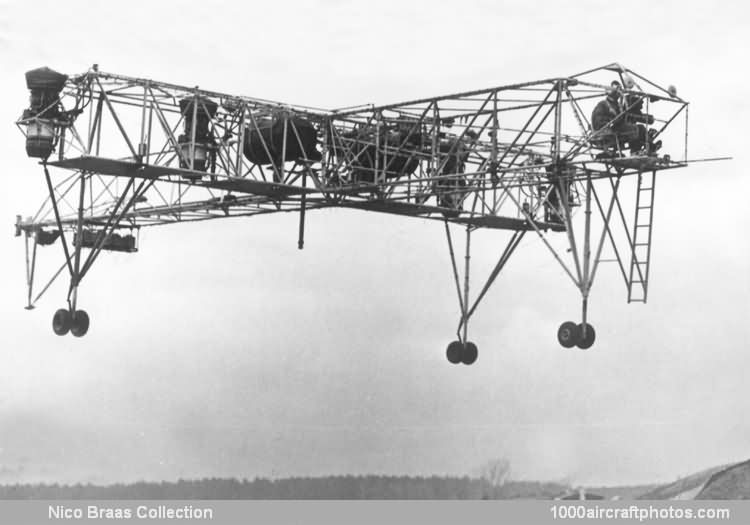11/15/2014. Remarks by Johan Visschedijk: "In order to keep the risk accompanying such a big step forward into unknown terrain of V/STOL, the design engineers of the Do 31 developed test rigs for experimental hover flights. At first, the Reglerversuchsgestell (control test rig) was built, essentially a steel tube rig with the length of the aircraft and great dynamic similarity. Each engine was simulated by a Rolls-Royce RB. 108 lift engine. The first tests with this rig were carried out with the device tethered to a column (supported at the center of gravity). The following 247 free flights all ended without accident, and many of them were flown without the attitude control system. The development team thus obtained a multitude of values and data that were used for the design of the "real" aircraft.
Next came the Große Schwebegestell (big hovering rig). It had the original wings, engine pods, hover control system, and landing gear. Basically, it was also a steel tube structure with partial fuselage fairing, but without tail unit. In the beginning, tests were flown on the column, for example for testing the fuel system, control and maneuvering around three axes, effect of the exhaust blast on neighboring assemblies, and so on. Later, the big hovering rig proved its importance in a free flight test series."
